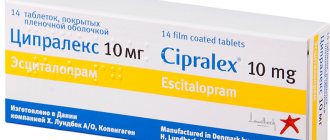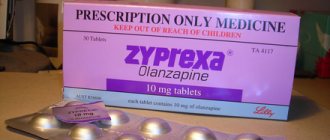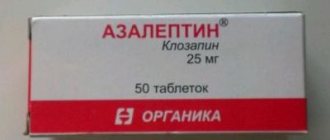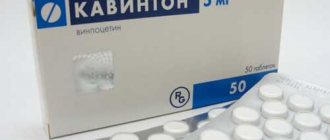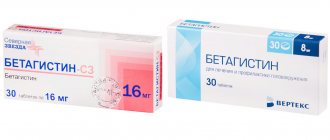extrapyramidal disorders, gait disturbance, convulsions, dyskinesia. Motor disorders, as evidenced by medical reviews of the drug Asentra, are more often observed in those patients with a history of similar symptoms.
- Genitourinary system. Possible manifestations include delayed ejaculation, erectile dysfunction, decreased libido, anorgasmia, gynecomastia, menstrual irregularities, priapism, galactorrhea, hyperprolactinemia.
- Respiratory organs. Some patients complain of suffocation or a feeling of compression of the sternum.
- The cardiovascular system. This medication may cause rapid heartbeat, chest pain, hypertension, or hypotension. Swelling and fainting may occur. Tachycardia develops extremely rarely.
- Sense organs. While taking the medicine, your vision may be impaired. Sometimes patients claim that they see a blurry image.
- Allergic manifestations. The medicine can provoke the following unpleasant symptoms: redness of the skin, swelling of the face, eyelids or lips, urticaria, generalized itching, skin rash, erythema multiforme.
- Other reactions. During therapy, you may experience sporadic bleeding, hypothyroidism, profuse sweating, and weight loss. Some patients feel weakness, constant yawning, and note frequent rushes of blood to the facial area.
Release form and composition
The dosage form of Asentra is film-coated tablets: round, white, with beveled edges and a notch on one side; on the fracture there is a rough white mass (7 pieces in blisters, 4 blisters in a cardboard box).
Composition of 1 tablet:
- active substance: sertraline – 50 or 100 mg (sertraline hydrochloride – 55.95 or 111.9 mg);
- auxiliary components: hydroxypropylcellulose, magnesium stearate, calcium dihydrogen phosphate, sodium starch glycolate, talc, microcrystalline cellulose;
- Shell: Opadry 03H28758 (talc, hypromellose, titanium dioxide, propylene glycol).
ASENTRA
Film-coated tablets
white, round, with beveled edges and a notch on one side; on the fracture there is a white rough mass.
| 1 tab. | |
| sertraline hydrochloride | 111.9 mg, |
| which corresponds to the content of sertraline | 100 mg |
Excipients: magnesium stearate, hydroxypropylcellulose, sodium starch glycolate, calcium dihydrogen phosphate, microcrystalline cellulose, talc.
Shell composition:
Opadry 03H28758 (hypromellose, titanium dioxide, talc, propylene glycol).
7 pcs. – blisters (4) – cardboard packs.
pharmachologic effect
Antidepressant, naphthylamine derivative. Selective blocker of neuronal reuptake of serotonin in the brain. The neuronal uptake of norepinephrine and dopamine is practically unaffected.
It does not have a specific affinity for adrenergic and m-cholinergic receptors, GABA receptors, dopamine, histamine, serotonin or benzodiazepine receptors. Does not inhibit MAO.
Causes anorexia, effective in obsessive states.
Pharmacokinetics
When sertraline is taken orally in doses of 50-200 mg 1 time/day for 14 days, Cmax in blood plasma is achieved in 4.5-8.4 hours. The average T1/2 in young and elderly men and women is 22-36 hours.
According to the half-life, an approximately twofold cumulation of the active substance is observed until an equilibrium state is reached after 1 week of treatment. Plasma protein binding is about 98%, Vd is 20 l/kg. Intensively metabolized during the first passage through the liver.
The main metabolite found in plasma, N-desmethylsertraline, has weak pharmacological activity.
T1/2 of N-desmethylsertraline varies between 62-104 hours. It is excreted mainly through the intestines and urine in equal amounts in the form of metabolites, less than 0.2% is excreted unchanged in the urine.
Contraindications
Concomitant use with MAO inhibitors, increased sensitivity to sertraline.
Dosage
Orally – 50 mg 1 time/day; if necessary, the dose can be increased to 200 mg/day over several weeks. The effect appears 7 days after the start of treatment, reaching a maximum after 2-3 weeks.
From the side of the central nervous system:
dizziness, drowsiness, headache, insomnia, feeling tired, weakness, tremor; rarely - manic or hypomanic state, anxiety, restlessness, visual impairment.
From the cardiovascular system:
rarely - redness of the skin with a feeling of heat or warmth, a feeling of heartbeat.
From the digestive system:
loss of appetite, diarrhea, dry mouth, nausea, cramps in the stomach or intestines, flatulence; rarely – constipation, vomiting.
From the side of metabolism:
increased sweating.
From the reproductive system:
rarely – decreased potency.
Allergic reactions:
rarely – fever, skin rash, urticaria or itching.
Drug interactions
When used simultaneously with anticoagulants, coumarin derivatives significantly increase the prothrombin time.
With simultaneous use, sertraline can displace other drugs from binding to plasma proteins, as a result of which the plasma concentration of the corresponding active substance increases and the risk of side effects increases.
When used simultaneously with drugs whose metabolism occurs with the participation of the CYP2D6 isoenzyme, it is possible to increase the plasma concentration of these drugs due to inhibition of the CYP2D6 isoenzyme under the influence of sertraline.
With the simultaneous use of MAO inhibitors (including selegiline, moclobemide), the development of serotonin syndrome (hyperthermia, muscle rigidity, myoclonus, as well as manifestations of instability of the mental and physiological state of the body, up to the development of delirium and coma) is possible.
When used simultaneously with lithium salts, tremor may increase. When used simultaneously with desipramine, it is possible to increase the concentration of desipramine in the blood plasma; with cimetidine - a significant decrease in the clearance of sertraline.
Pregnancy and lactation
Adequate and well-controlled studies of the safety of sertraline during pregnancy have not been conducted, so use is possible only in cases where the expected benefit to the mother outweighs the possible risk to the fetus.
It is unknown whether sertraline is excreted in breast milk, so use during lactation is not recommended. Some studies have shown that in infants whose mothers received sertraline while breastfeeding, its plasma levels are negligible or undetectable, while concentrations in breast milk exceed those in the mother's blood.
Women of childbearing age should use reliable methods of contraception during treatment with sertraline.
Experimental
studies
have not revealed the teratogenic or mutagenic effects of sertraline. However, in doses of approximately 2.
At 5-10 times the maximum daily clinical dose, sertraline caused a delay in ossification of fetal bone tissue, possibly as a result of effects on the mother.
When sertraline was administered at doses approximately 5 times the maximum clinical dose, a decrease in neonatal survival was observed.
Use in childhood
Safety for use in pediatrics has not been established.
For impaired renal function
Use with caution in case of impaired renal function.
Pharmacological effect
Antidepressant. A specific inhibitor of serotonin (5-HT) reuptake in neurons. The metabolism of norepinephrine and dopamine is slightly affected. At therapeutic doses, sertraline blocks the uptake of serotonin into human platelets.
The drug does not have a stimulating, sedative or anticholinergic effect. It has no affinity for serotonin, dopamine, histamine, benzodiazepine, GABA, cholinergic and adrenergic receptors. The antidepressant effect is observed by the end of the second week of regular use of Asentra, while the maximum effect is achieved only after 6 weeks. Unlike tricyclic antidepressants, Asentra does not cause weight gain; in a number of cases its decrease was noted. The drug does not cause mental or physical drug dependence.
Pharmacological profile
The main reason for the development of depression in humans is the insufficient production of serotonin mediators by the brain substance.
Asentra has the ability to reuptake a specific mediator with the help of platelets, this ensures a constant content of serotonin in the bloodstream.
Sertraline Formula
The drug does not have a stimulating effect on the central nervous system and does not inhibit the transmission of impulses along the nerve fiber. A distinctive feature is the complete absence of addiction effect. The positive therapeutic effect begins to appear two weeks after the start of treatment. The maximum therapeutic effect is observed after 6 weeks of therapy.
When administered orally in the tablet form of the drug, it is completely absorbed in the small intestine, but the maximum concentration of the active substance in the blood plasma is observed 6-8 hours after administration.
Concomitant use with food helps reduce the bioavailability of the drug by 30% of normal. To achieve an equilibrium concentration of the mediator serotonin in the blood, the medicine is taken for two weeks.
Contraindications
Absolute:
- pregnancy (the safety profile of Asentra in this category of patients has not been studied);
- breastfeeding period (sertraline is detected in breast milk);
- age up to 6 years;
- combined use with fenfluramine/tryptophan;
- simultaneous use with monoamine oxidase inhibitors (MAO) and a period of 14 days after their discontinuation;
- unstable epilepsy;
- hypersensitivity to the components of the drug.
Relative (should be taken with extreme caution):
- neurological disorders (including mental retardation);
- epilepsy;
- loss of body weight;
- liver and/or kidney failure;
- manic states;
- children over 6 years of age.
Indications and contraindications for use
Asentra is effective for the following disorders:
- depression of various origins;
- depressive anxiety disorder;
- compulsive-obsessive disorder;
- stress disorder due to previous mental or physical trauma;
- panic disorder.
Contraindications to the use of the drug are divided into absolute and relative. Relative contraindications imply careful use of the medication under constant medical supervision.
Absolute contraindications include:
- epileptic disorder occurring in an unstable form;
- complex use of tryptophan;
- children under 6 years of age;
- the period of bearing and feeding a child;
- increased individual sensitivity to the active chemicals of the drug.
Relative contraindications:
- epileptic brain activity;
- neurological disorders;
- acute and chronic renal failure;
- manic syndrome;
- anorexia of psychogenic origin;
- age more than 6 years.
Article on the topic: What is inulin - properties of the prebiotic and instructions for use
Use during pregnancy and lactation
There are no controlled results of using sertraline in pregnant women, so the drug should be prescribed to them only if the expected benefit to the mother outweighs the potential risk to the fetus.
Sertraline is found in breast milk and therefore treatment with this drug during breastfeeding is not recommended. There is no reliable data on the safety of its use in this case. If treatment is still necessary, it is better to stop breastfeeding.
Generics and original drugs of sertraline[ | ]
- Aleval - Sun Pharmaceutical Industries Ltd. (India)
- Asentra – KRKA, dd Novo Mesto (Slovenia)
- Default – Actavis
- Zalox – Pharmascience (Canada)
- Zoloft - Pfizer (original drug)
- Zosert - SUN Pharmaceutical Industries Ltd. (India)
- Lustral - Pfizer (Israel; original drug)
- Emoton – Ersel Pharma (Ukraine)
- Seralin – Eczacibasi Ilac Sanayi ve Ticaret (Türkiye)
- Serenata – Torrent Pharmaceuticals (India)
- Surlift – Ranbaxy (India)
- Sertiva – Lek Pharmaceuticals dd (Slovenia) / Sandoz GmbH (Austria)
- Sertran – Chaikafarma AD (Bulgaria)
- Sertraline hydrochloride – Lee Pharma (India)
- Setaloft – Actavis
- Stimuloton – Egis Pharmaceuticals (Hungary)
- Torin - Veropharm (Russia)
- Misol – Nobel Pharma (Türkiye)
- Mistral – Nobel Pharma
Instructions for use
The instructions for use indicate that for depression and OCD in adults, the average initial dose of Asentra is 50 mg 1 time / day, in the morning or evening. The daily dose can be gradually increased, no earlier than after a week, from 50 mg to a maximum daily dose of 200 mg.
For panic disorders and PTSD, the initial dose of Asentra is 25 mg 1 time / day, in the morning or evening. After a week, you can increase the dose to 50 mg 1 time / day, and then gradually, no earlier than a week later, increase to a maximum daily dose of 200 mg.
- The initial dose of Asentra for children aged 6 to 12 years is 25 mg sertraline 1 time / day, in the morning or evening. After a week, you can increase the dose to 50 mg 1 time / day. For children aged 12 to 17 years, the initial dose is 50 mg 1 time / day in the morning or evening. If necessary, the daily dose can be gradually, no earlier than after a week, increased from 50 mg to a maximum daily dose of 200 mg. To avoid an overdose, the lower body weight of children compared to adults should be taken into account, and when increasing the dose to more than 50 mg/day, careful monitoring of this category of patients is necessary: at the first signs of an overdose, the drug should be discontinued.
A satisfactory therapeutic result is usually achieved within 7 days from the start of treatment. However, to achieve the full therapeutic effect, regular use of the drug is required for 2-4 weeks. In patients with OCD, it may take 8-12 weeks to achieve good results. The minimum dose that provides a therapeutic effect is subsequently maintained as a maintenance dose.
In case of liver dysfunction, the drug should be prescribed with caution. In case of severe liver dysfunction, the dose of the drug should be reduced or the intervals between doses increased.
Method and features of application
The drug is recommended for use in the treatment of OCD and depression in an initial dose for adults of 50 mg per day (25 mg for PTSD), with a single dose in the morning or evening. From the second week of administration, the volume of incoming drug is gradually increased to maximum values (200 mg).
The duration of the therapeutic effect is determined by the doctor; the course of treatment is usually 2-7 weeks; if necessary, the use of the medicine is prescribed for a longer period. Children aged 6-12 years at the initial stage of treatment are prescribed no more than 25 mg of sertraline per day. Adolescents aged 12-17 years are given an initial dose of 50 mg per day, followed by an increase. An individual calculation must be made taking into account the patient’s body weight.
Side effects
This medicine may cause the following side effects:
- Central and peripheral nervous system: insomnia, drowsiness, motor restlessness, dry mouth, increased sweating, hypomania, headache, tremor, dizziness, agitation, anxiety, weakness, mania, decreased appetite (in rare cases, increased) up to anorexia;
- Laboratory indicators: reversible hyponatremia (in most cases in elderly patients, as well as during therapy with diuretics or some other drugs), associated with the syndrome of inadequate secretion of antidiuretic hormone (ADH);
- Digestive system: diarrhea, flatulence, vomiting, nausea, abdominal pain; rarely (with long-term therapy) - asymptomatic increase in transaminase activity in the blood serum (transient in nature, disappears after discontinuation of treatment);
- Others: decreased libido, redness of the skin, visual disturbances, ejaculation disorders, weight loss.
Withdrawal syndrome after cessation of treatment is usually rare. Symptoms: aggressive reactions, psychomotor agitation, paresthesia, symptoms of depression/psychosis, hypoesthesia, hallucinations, anxiety. These disorders are difficult to differentiate from the symptoms of the underlying disease, and they can develop with the use of other antidepressant drugs.
Adverse reactions
Side effects when taking Asentra are quite common and affect different systems of the body.
From the digestive system:
- complete lack of appetite;
- increased thirst;
- dyspeptic disorders;
- pain syndrome localized in the epigastric region;
- acute impairment of liver function;
- cholestasis;
- inflammation of the pancreas.
From the urogenital system:
- erectile dysfunction;
- delayed sexual development;
- progressive increase in the size of the mammary gland;
- change in the regularity of the menstrual cycle.
From the cardiovascular system, signs of damage to the conduction system of the heart develop.
In addition to all the listed adverse reactions, laboratory tests reveal significant changes in hormonal levels. If the drug is used incorrectly, the toxic effect on organs and systems increases significantly.
Taking the medication can cause side effects associated with the development of sleep disorders - from drowsiness to insomnia, tremor, weakness. There may be a change in appetite, dry mouth, increased sweating, disturbances in the gastrointestinal tract, redness and itching of the skin.
Overdose
In case of an overdose of sertraline, an increase in its side effects is observed due to an increase in the toxic effect of the drug.
Symptoms:
- Agitation;
- Dizziness;
- Anxiety;
- Psychomotor agitation;
- Diarrhea;
- Serotonin syndrome - nausea;
- Vomiting, drowsiness;
- ECG changes;
- Mydriasis;
- Tachycardia;
- Increased sweating;
- Myoclonus and hyperreflexia.
Treatment: symptomatic provision of normal airway patency (oxygenation and ventilation) and monitoring of heart rate and vital organs and systems.
Drug overdose
It is important to realize that you can only take Asentra according to the regimen prescribed by your doctor. Reviews from patients who strictly adhere to the recommended therapy show that there are no symptoms of overdose in this case. But, unfortunately, not everyone adheres to this rule.
For those who abuse the medication "Asentra", the instructions provide a number of symptoms indicating an overdose:
- serotonin syndrome;
- nausea, vomiting;
- increased drowsiness;
- tachycardia;
- agitation;
- dizziness;
- psychomotor agitation;
- diarrhea;
- profuse sweating;
- myoclonus;
- hyperreflexia.
The drug does not cause a severe clinical picture, even if used in high doses. However, you should be careful when combining this medication with other medications. In some cases (for example, simultaneous use of the drug with ethanol), symptoms of severe poisoning may appear. This condition can be fatal.
There are no specific antidotes to the drug. Therefore, treatment includes the following areas:
- supportive intensive care;
- control of vital functions;
- taking activated carbon tablets (this is a more effective method than gastric lavage or inducing vomiting);
- airway support.
Since sertraline is distributed throughout the body in a large volume, dialysis, forced diuresis, hemoperfusion, and blood transfusion are ineffective.
special instructions
- The use of Asentra during pregnancy and breastfeeding is strictly contraindicated, since the drug has a pronounced toxic effect on the growth and development of the child. Women of reproductive age are recommended to use an antidepressant in combination with hormonal contraceptives to prevent unwanted pregnancy while taking the drug.
- For persons who suffer from insufficient liver or kidney function, the use of Asentra should be carried out according to a strictly individual plan. This feature is associated with delayed filtration of the main active ingredient. If a patient takes any medications for a long time, then the attending doctor must know about this.
- The peculiarity of this drug is that it does not have a depressing effect on a person’s consciousness; it also does not affect the ability to work and the ability to drive vehicles.
- With combined conservative treatment with psychotropic drugs and antidepressants, work ability is reduced.
Drug interactions
Possible reactions when using sertraline in combination with other drugs/substances:
- Desipramine: its plasma concentration in the blood increases when taking sertraline in a daily dose of 50 mg;
- Uimetidine: the clearance of sertraline is significantly reduced;
- Fenfluramine, tryptophan: possible interaction reactions (this combination should be avoided);
- Tolbutamide, diazepam, warfarin (drugs that bind to plasma proteins): interactions may occur;
- Antipyrine: a decrease in its half-life may be observed when using sertraline at a dose of 200 mg;
- drugs that depress the central nervous system, ethanol and ethanol-containing drugs: possible development of interaction reactions that require special caution (combination with ethanol and ethanol-containing drugs is contraindicated);
- Coumarin derivatives (indirect anticoagulants): there is a significant increase in prothrombin time (at the beginning of the course of sertraline and after its completion, monitoring of prothrombin time is recommended);
- Lithium and other drugs that affect serotonergic transmission: pharmacodynamic interaction is possible (must be combined with caution);
- MAO inhibitors: severe complications occur, including the development of serotonin syndrome - lability of the autonomic nervous system (sharp fluctuations in parameters of the cardiovascular and respiratory system), myoclonus, hyperthermia, rigidity, changes in mental status, including severe agitation, increased irritability, confusion consciousness with the possible development of a delirious state or coma; similar complications (in some cases fatal) can also occur when using MAO inhibitors during therapy with antidepressants that inhibit the neuronal uptake of monoamines, or immediately after its discontinuation.
Reviews
Patients' opinions about the medication are not always so positive. Although, in fairness, it must be said that negative reviews are rare. Most often, people say that the medication helped them in a certain life situation.
Patients who take the pills for a long time fully confirm the doctors’ opinion about the drug “Asentra”. Reviews from patients indicate that the medicine perfectly relieves anxiety, fears, and panic conditions. An effective remedy in the fight against psychosis. People claim that treatment with the drug allows you to restore a good mood and improve your mood.
However, patients pay special attention to the accumulative ability of the drug. After all, many people who have started treatment with this medication claim that Asentra tablets do not help. Patients who experienced a beneficial effect from treatment indicate that they felt the first results only after 2 weeks. And some people much later. After all, most often the issue of increasing the dosage is decided after 2 weeks. This allows you to avoid such an unpleasant condition as an overdose.
Doctors' opinions about the drug
What do people who were prescribed the medicine think about this remedy? And how do doctors feel about the drug?
Doctors consider the medicine to be quite safe. This allows the tablets to be recommended to most patients. Doctors, carefully monitoring the dynamics of therapy with Asentra, came to the conclusion that the medicine is quite effective. It helps cope with depression, eliminates psychosis, and relieves the patient from increased anxiety.
Comparing it with such a common antidepressant as Zoloft, doctors agreed that Asentra was more effective. Reviews from doctors indicate that around the end of the second week, patients begin to react much more calmly to various stressful situations.
Storage conditions and shelf life
The drug should be stored out of the reach of children at temperatures up to 25°C. Shelf life: 2 years.
Antidepressant Asentra: instructions for use and people's opinions - tips and recommendations on News4Health.ru
Life in the modern world is replete with many factors that negatively affect human health. The main ones are poor ecology, questionable quality of food, contaminated drinking water, poor quality medical care, as well as stressful situations and bad habits. Therefore, it is so important to pay attention to regular healing of the body using various methods and means. Be sure to consult a specialist so as not to harm your health!
Research[ | ]
A 2009 study comparing 12 newer antidepressants found sertraline (along with escitalopram) to be one of the best drugs for treating major depressive disorder (MDD).[18]
Some studies have questioned the effectiveness of sertraline. Thus, a comparative review of 42 clinical trials of 6 antidepressants (sertraline, fluoxetine, paroxetine, citalopram, nefazodone and venlafaxine), including those trials whose data have not previously been published, showed that the results of the majority of these 42 trials were negative. The difference between placebo and drugs averaged only 1.8 points on the Hamilton scale—a number that was statistically significant but not clinically significant[19].
See also: Selective serotonin reuptake inhibitors § Criticism

